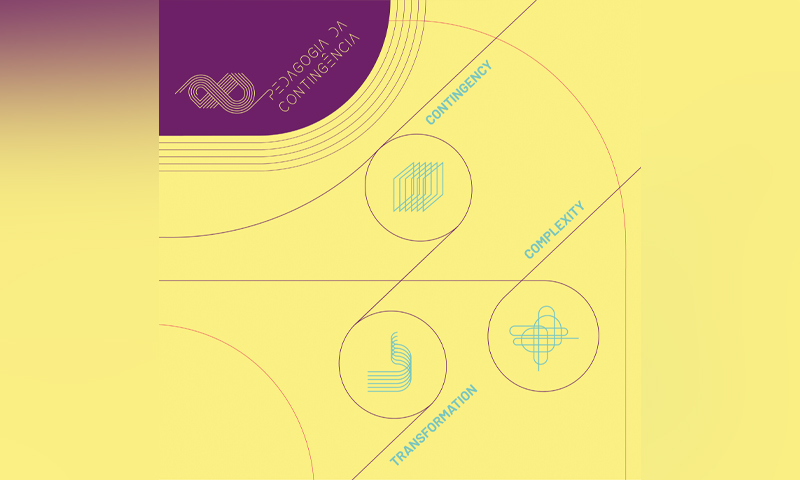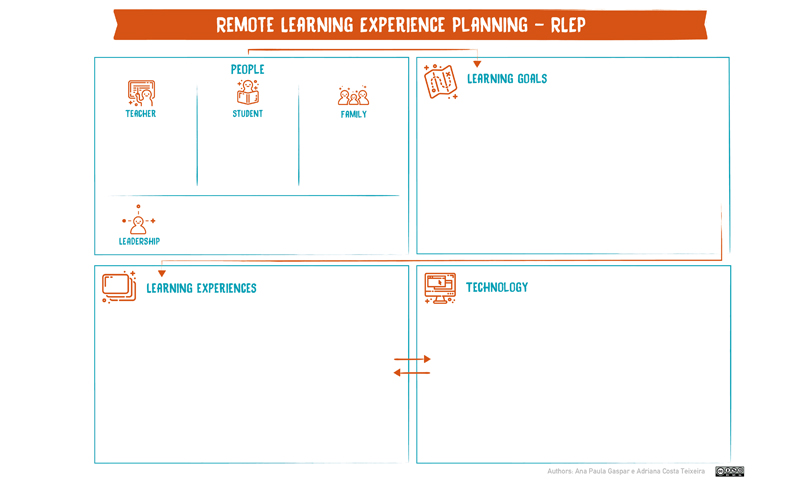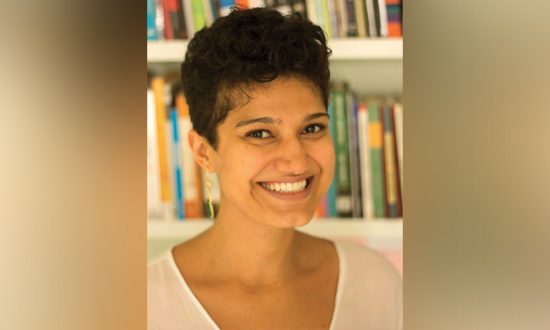Ana Paula graduated in History and Digital Communication and completed her Masters in Design. She has 13 years of experience working with innovation in education. In the first 6 years of her career, she worked for museums and founded a startup. In the last 7 years she has been working as a consultant for EdTech and service design companies. She has had international experiences in Silicon Valley and London on accelerators, innovation hubs and maker spaces. She researches develops and manages projects for complex, multi-stakeholder initiatives that contribute to educational innovation, strengthening teacher training in technology and supporting managers in decision making by adopting technology for public
and private schools.
The occurrence of the closing of schools around the world due to the coronavirus pandemic created the emergence of a new mental model. It was no longer Cartesian, linear or logical for all education professionals and society in general as we were facing an unprecedented situation. It is clear that throughout history it was not the first episode of a pandemic with millions of deaths, but the new fact is the set of contemporary factors such as the rapid and intense exchange of information and people, a different political scenario, more polarized and at the same time with diffuse leadership, and the new status of education in society with the integration of technology in the educational process. As we contemplated the beginning of the closing of schools, education professionals around the world began to ask themselves: with what mentality are we going to act in one of the strangest occurrences of our lives? What kinds of thoughts and actions should nurture decision-making in these scenarios? What set of skills should be mobilized to navigate on this journey through the unknown? The design view of the world for realities like this was the one that seemed to be the most appropriate. The contribution of different areas of knowledge to education is fully developed and vast, however, the encounter with the design is recent and has been taking place, among other factors, due to the need for education to redesign and innovate in its methods and practices, as well as, for the new skills of design that moved from the organization of industrial productions to the resolution of the so-called wicked problems like education during the pandemic.
Wicked problems are a “class of social system problems which are ill-formulated, where the information is confusing, where there are many clients and decision-makers with conflicting values, and where the ramifications in the whole system are thoroughly confusing.” This mentality of Design was added to the previous reading of Paulo Freire’s Pedagogy, which also formulates a concept to define problems that are difficult to overcome, a limit-situation. For this author of education, a limit-situation, as a concrete reality, can cause oppositions of themes and tasks in individuals from different areas and even subareas in the same area, which therefore require programmatic diversification for their unveiling. This is a situation that presents itself as a barrier and obstacle for the subjects that after being critically perceived have the desire to act and solve problems in the best possible way with hope and confidence. The resolution of a limit-situation occurs through the collective discovery of untested feasibility, which is unnoticed practical solutions, an unprecedented thing that goes through a theory of dialogical action or any other that seeks the same end.
When connecting the views on complex problems of these two areas, Education and Design, it is clear that the object and practice of professionals who work with complex problems depend much more on the current reality in which there is a problem or situation-limit than the pre-established definitions by the scientific fields of each discipline. Thus, the meanings around the wicked problems and the limit situation and the proposals presented by the authors were what we chose to observe, interpret and act in the face of the challenges that the pandemic presented us: a reasoning to solve complex problems, based on interactions and flexibility, collaboration and a deep understanding of human factors. This model of thinking has been incorporated into our view of the world before the pandemic and has intensified in recent months to organize complex experiences in new intentions, in new possible designs. The pandemic, as a limit-situation, made us glimpse untested feasibility from our view of the world, enriched by Design. The first viable that we built in
this sense was the Pedagogy of Contingency.
The Pedagogy of Contingency and its three axes: a manifesto
The Pedagogy of Contingency was born in the face of the unpredictable, the desire to investigate, record, and systematize the observations and the lived to signify personal and professional experience and to share with the people around. The term seemed to make sense to the Education and Design community and was first published in mid-March when schools in Brazil started preparing their contingency plans. Since then the meaning of the term has been built on different opportunities for dialogues in podcasts, webinars, papers, interviews, and in two exclusive actions: an unprecedented tool created to support teachers in the planning of activities and a learning and practice community of educators around the theme.
Pedagogy of Contingency is a project to investigate reality, think about practice, create and realize visions, and possible futures for education during and after the pandemic. A pedagogy that fuses fields. Just as Paulo Freire fused pedagogy and awareness, Contingency Pedagogy fuses Pedagogy and Design. It is organized into three axes: Contingency, Complexity, and Transformation (image 1). The axes represent inherent and indispensable characteristics for thinking and acting in complex scenarios. They are also an attempt to organize points of contact between Education and Design around meanings that can be recognized as valuable for both fields.
Contingency
A contingency is what may or may not be, it may or may not occur. It is being in contact with the unpredictable, it is touching uncertainty, it is the non-necessary and the non-impossible, so it legitimizes the action even in the face of the unknown. A contingency is revealed in the unpredictable and uncertain, in the limit situation and the uncontrollable context. It was the nature of the contingent that placed schools and educational managers in the face of preparing contingency plans for the closure of schools and the continued provision of remote learning experiences. It is the contingency that should be guiding society in the debate about the reopening of schools. In this way, a Pedagogy of Contingency is one that deals with uncertainties and unpredictability as an inherent element of the process, which is why it considers different nuances and possibilities and does not focus on solutions created only on certainties. The contingency admits the uncontrolled situation
and tries to create a shared vision of the risks and powers behind each solution generated collectively. We got it wrong together and got it right together. It is our radical collaboration and a social pact that a contingency demands from us all.

Complexity
The historical journey of the two main areas involved in the Pedagogy of Contingency, Education, and Design, seems to reach a place of scientific maturity where both recognize their problems in the common field of complexity. We don’t talk about education and design and its problems without taking into account the complexity involved in its multiple subject scenarios, relationships, circumstances, expectations, impacts, actions, and realities. Education and Design present themselves as polycompetent fields as they present a huge variety of circumstances that allow advancing in each field and breaking the isolation of both by the exchange and circulation of concepts, cognitive schemes, overlaps, interferences, and the emergence new explanatory hypotheses as well as the constitution of organizational concepts that allow the articulation of scientific content in a common theoretical and practical system, in our case, innovation in education. The complexity in the Pedagogy of Contingency means an investigation that constitutes an effort to feel and act together and build a non-compartmentalized communication that helps to interpret the reality in the complexity of its permanent becoming. Complexity reveals our already announced need for a systemic understanding of life and the networks that support it.
Transformation
Faced with the contingent and the complex, the school as a social institution goes through a growing movement of the search for innovation and transformation in the face of contemporary challenges. The effort of managers and educators
to change practices and create alternative paths to the traditional functioning of schools has been noticed in isolated cases, and the evidence of a transformation on a relevant scale to impact the majority of society has not yet been noticed. During the pandemic, a recurring question hangs over all of us and especially education professionals: what transformation will this
historical fact be able to cause in education? Transformation calls for our design reasoning and our utopian hope for creating possible futures. How can we design viable new experiences from this wicked problem?
A tool and a professional learning community
Based on the elaboration of the Pedagogy of Contingency and its three axes, we built two proposals around this meeting: a tool for planning remote learning experiences and a professional learning community around the theme. We know that there is a long way to a more robust elaboration of new pedagogy for the complexity that embraces so many aspects of education, but the investigative thinking and the desire for a design that are characteristics of the Pedagogy of Contingency filled us with freedom and courage to create these two initiatives.

The first one was “PERA” (Remote Learning Experience Planning), a framework that was co-created by a team of designers and educators to help teachers think about activities for students in this closing period and also to remember that we have a very unusual situation and that we need to pay attention to the new components of this new configuration when proposing
activities (image 2).
The second one was the “Pedagogia da Contingência” website to communicate and organize our productions and bring teachers together in a learning community on the topic. Conversations around the theme are taking place at live transmission, webinars and other online events and we are investing so that more professionals will join us in this initiative. We want to gather experiences from different educators in this period and organize reports of experiences that inspire other teachers. Creating realities with an investigative and projective look from the challenges that arise along the way are what Pedagogy of Contingency proposes. We are working in this direction to transform education in the direction we believe.




